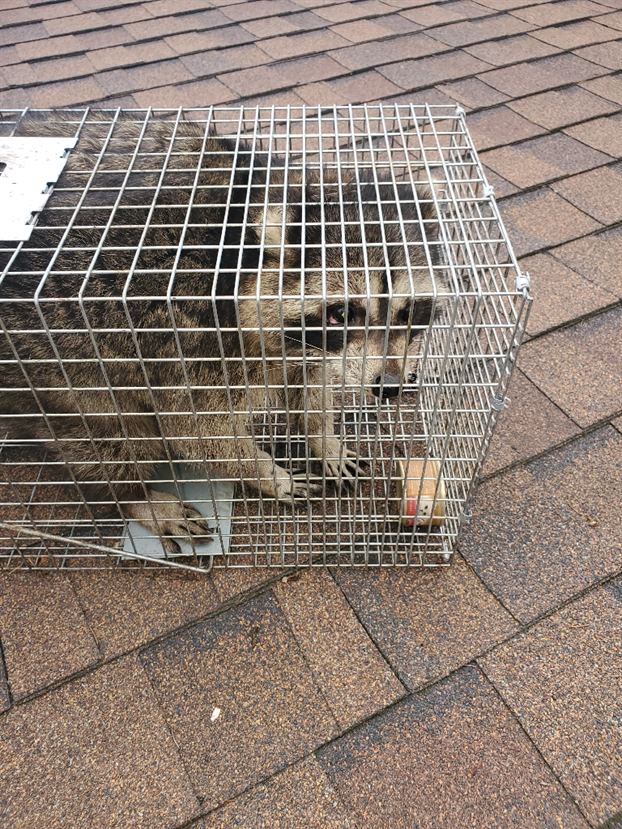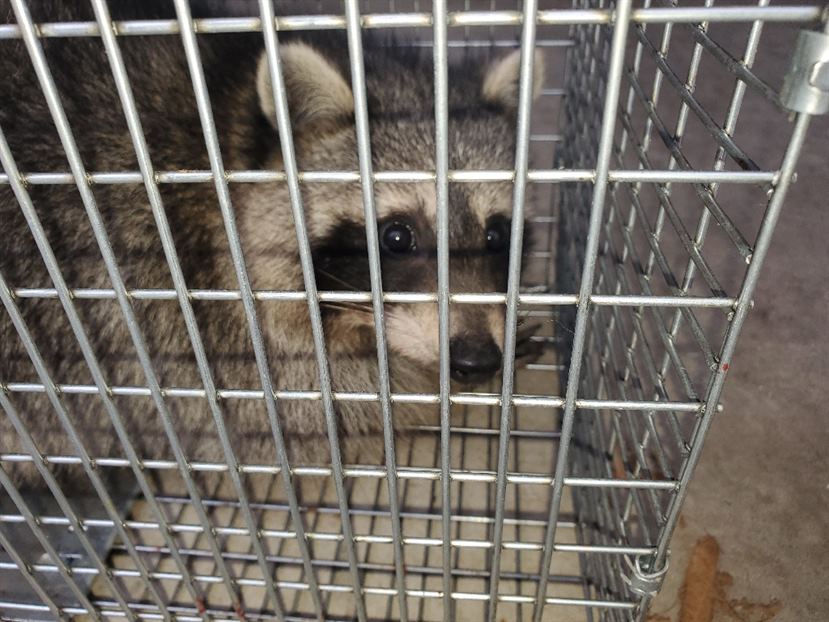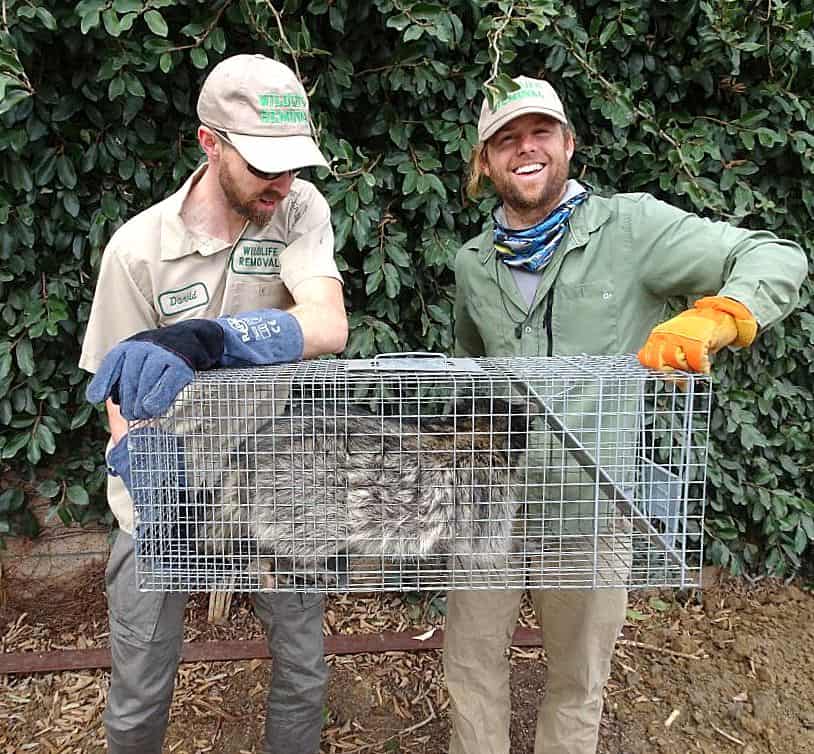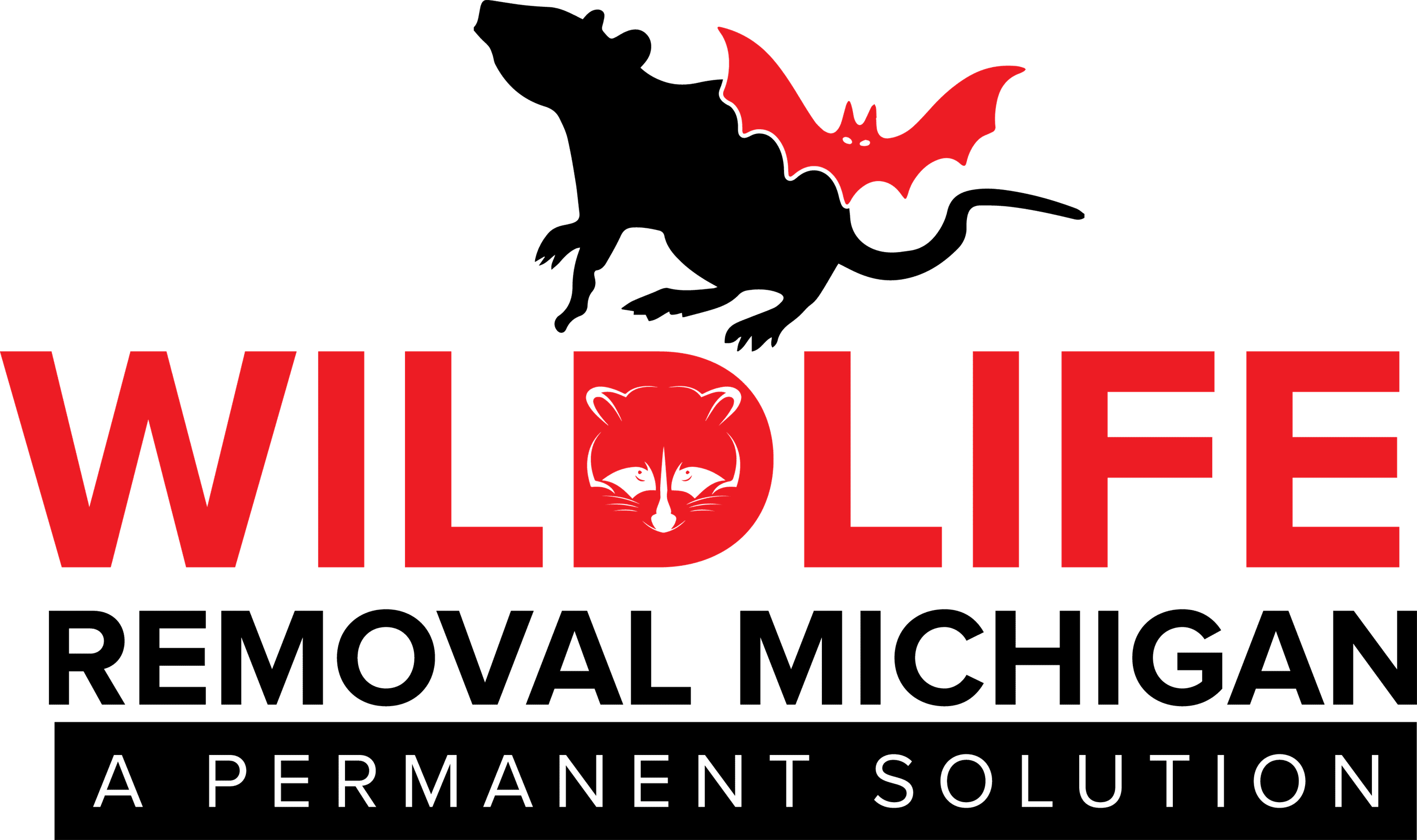Raccoon Removal
If you have raccoons on your property or in your house, there is a very good chance you encounter them frequently, especially at night. Raccoons are a highly-adaptable creature that can make almost anywhere its home as long as there are ample amounts of food and shelter. If there is one place raccoons love, it is urban areas.
Why are raccoons attracted to my property?
There are many reasons that raccoons may have wandered onto your property or into your home. By nature, they are very curious, as this helps them be excellent scavengers. One of the biggest attractants for raccoons is easy access to food. Oftentimes, dog food, or trash that is unsecured makes an easy food source. In addition, a high number of small animals or any fallen fruit from fruit trees can be a big attractant. Also consider any large brush piles or wooded areas on your property, as these provide both food sources and shelter.

Getting raccoons in your attic or garage can be a serious problem for many different reasons. Nine times out of ten, the wandering raccoon is a female raccoon looking for a nice, cozy place to make a den and raise her young. This presents a whole host of other problems. No matter why they choose to make your property their home, you will likely want them gone.
Urban areas are often a refuge of food, shelter, and relative safety. Raccoons are excellent at finding their way into your home or garage and can become a real nuisance. Continue reading this article to learn more about raccoons and why you should remove them as soon as possible.
Why should I remove the raccoons?
Raccoons cause all kinds of damage, both property destruction, and health-related issues, both of which can be very serious. When it comes to the destruction aspect, raccoons might win a gold medal. They are the kings of making a mess out of unsecured trash cans and other food sources. If you have any special birds on your property, such as chickens, ducks, or geese, raccoons can wreak havoc on them. In addition, any small pets should be looked after, as raccoons can be violent in many cases. These critters will also root around your yard, garden, or flowerbed for any grubs or other insects they can find.

While the property damage is a big deal, the health issues that raccoons can cause are far more important. Raccoon feces are a host to many different maladies, from raccoon ringworm to E. coli and salmonella that have the ability to cause sickness to you or your family. In addition to the risks posed by their feces, raccoons are also known to be carriers of rabies and a variety of other illnesses that have the potential to be dangerous to both humans and pets. As can be seen, it is vital that raccoon problems are taken care of immediately because of the destruction and health issues they can cause.
How can I prevent raccoons?
Keeping raccoons from your home and property is a very serious and important task, and it actually is not too big of a deal. The best way you can keep raccoons from your property is to simply cut down on the easy sources of food that can be found on your property. Simply putting your pet’s food away, picking up any fallen fruit from your fruit trees, and being sure that your trash can is secured are all excellent methods that help prevent a raccoon problem. Now that you have done the easiest part, be sure to inspect your home in great detail. Check both the interior and exterior of your home. Check the foundation, the walls, the roof, and the attic in particular. If you see any holes, cracks, or gaps, you can fix them in a variety of ways. One of the best ways to keep raccoons out is to bolt sheet metal over potential problem areas or to replace rotten lumber with new, treated lumber. As with most nuisance animals, preventing the infestation of the animals is a lot more simple than dealing with them inside of your home.
How do I remove raccoons?
While removing raccoons may seem straightforward, it actually is not that simple. If it was at its most basic form, raccoon removal would involve setting a baited cage trap that would capture the raccoon without harming it. It could also mean installing a one-way door so that the raccoon can go outside, but not be allowed back into your home. The big problem with simply trapping the raccoons and removing them has to do with the young that are likely in the attic. Generally, these younglings are very small and helpless until later in the spring. If their mother is trapped, the baby raccoons will suffer by dying slow deaths. Bad odors can occur from this, in addition to a variety of health issues related to dead animals. Since this occurs very often, it is generally expected that homeowners will hire wildlife removal services to take care of this problem. Generally, the wildlife removal specialist will remove the mother, all the while searching the insulation of the attic for the nest of babies.
Why hire Wildlife Removal Michigan?
Obviously, it is important that all raccoons, both adults and pups, are removed from your attic. This is generally the main reason it is suggested to hire wildlife removal professionals. It is also important to realize that Wildlife Removal Michigan experts not only remove the raccoons from your property, but they also examine your home and property and determine ways to prevent any future raccoon problems. Wildlife Removal Michigan services the state of Michigan, taking care of any wildlife problems homeowners may encounter. Once our professionals have safely removed both the adult and young raccoons, they will look for ways to seal up your home to prevent future raccoon invasions, sealing up gaps, bolting sheet metal on, raccoon-proofing your chimney, and a variety of other prevention methods. Wildlife Removal Michigan focuses on removing raccoons legally, ethically, and effectively, providing great value and efficiency to our happy customers.
What is the Best Way to Trap a Raccoon?
Raccoons are known for being smart and cunning creatures. They’re frequently found diving into dumpsters or scavenging food from your yard. But they are also commonly found inside homes, including attics, wall spaces, crawlspaces, and more. For homeowners, removing a raccoon urgently is of the utmost importance. Pests of any kind will cause significant damage if left for prolonged periods.
That leaves only one question: what is the best way to trap a raccoon? In this article, we’ll answer exactly that.
Before we continue, if you’re currently dealing with a raccoon infestation and need help, then contact Wildlife Removal Michigan. We specialize in the removal of all animals ranging from bats to raccoons and everything in between. But first, read the advice below.
Important information
Being curious creatures, raccoons will investigate any potential sources of food. That makes them relatively easy to trap. But beware, raccoons are significant disease carriers – they’re the primary vector for rabies in the United States. Therefore, even after capture, they should be treated with caution.
Raccoons are also primarily nocturnal and omnivorous. Hence, the well-known image of a raccoon rattling around trash cans in the middle of the night.
Using this information, we can devise successful strategies to trap a raccoon.

How to trap a raccoon
- Step One: Pick the Trap
Part of the problem of picking the best way to trap a raccoon is selecting the right trap. The laws in your area will largely dictate your trap choice. Some even require a license to use and operate. Therefore, before beginning, check your local legislation.
Here are three of the main types of traps:
Body grip traps: These traps are lethal and are similar to rat traps, only bigger. Bait is placed on the trap, and it is then left in a location commonly visited by the raccoons. Then, once activated, the spring-loaded mechanism snaps down on the raccoon, choking or crushing the animal. These traps are dangerous and difficult to use, originating with old fur trappers. Other traps are advisable.
Paw hold traps: Also, a hangover from the days of fur trappers, paw hold traps clamp down on an animal’s paw, keeping it in place. Then, the animal is killed once discovered. Again, alternative methods of trapping are preferable.
Live cage trap: The most common and preferable method of trapping raccoons. Bait is placed inside the cage. The raccoon is, thus, lured inside, and upon entering, triggers the mechanism shutting the cage. These cages are made from steel and prevent the raccoon from escaping.
- Step Two: Placing the Trap
If raccoons are discovered in your attic or another location, placing cage traps inside the area or near an entrance is advisable. You’re aiming to pick a location commonly visited, increasing the chance of catching the raccoon.
- Step Three: Choose the Bait
Once you’ve picked and placed your cage trap, you’ll want to choose a bait exclusively attractive to raccoons. Fish and meat work well but are likely to attract other animals. Therefore, opting for foods such as marshmallows or watermelon is preferable.
As raccoons are nocturnal, set the bait in the evening. That way, it will stay fresh enough and is less likely to attract other animals. You’ll also want to cover the trap with leaves and grass to make it look more natural.
- Step Four: Relocate the Raccoon
Finally, check the traps frequently. Inside a trap, a raccoon has no access to food or water. Therefore, regularly check the trap and then release the raccoon far from your home.
If you don’t know where to release the raccoon or need assistance, please contact us here at Wildlife Removal Michigan. We’re experienced in handling and relocating raccoons.

